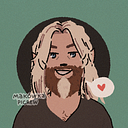Game UX - Pokémon: Evolving into disappointment
-a look at Expectations #1-
🇫🇷 Cet article est aussi disponible en Français ici : click click.
When people talk about User Experience, there are some common misbeliefs induced by the use of screens. Interfaces sure are a mean to help or guide the players, but they trully are a thin part of UX overall.
‘Expectations’ are nowadays built up sometimes years before a game’s production even starts. It may not be particularily considered by most of the players, but it actually is a big part of User Experience. Those expectations grow up and set up a ‘hype level’ which directly influences the playing experience.

Some games will benefit from revelations in advertising or social media contents, some others can stimulate imagination based on previous opuses already well sold or even critically acclaimed and, in rarer cases, the only name of their creator can be the hype factor on the apparition of some new IPs.
But all of these subjects just nudge into a global perception that forms an opinion, that can either be positive or not, starting players’ overall appreciation of the game without having even played yet.
If there is a franchise that make people talk around every release, it surely is Pokémon. For each game, impressions are numerous and diverse in the media.

When is Game Freak going to start making real games again? Why are the graphics so bad? Aren’t these new Pokémons really just basic animals and everyday objects? Seriously, a keyring?!
Let’s face it. There may be some factors clouding our judgment now.
1. We are not the main target anymore
It kind of feels like stating the obvious here, but let’s say it once for sure, maybe it will help admitting it:
Pokémon is a game targeting young children.
This statement alone already harbors several aspects of the false perception players can have. Game Freak’s intentions of design are built to fit a certain audience that doesn’t coincide with the people actually buying the games.
Pleasing children is one of the main cause for grown-ups frustration or disappointment. Some parts of the overall experience are specifically designed to echo with childhood construction marks.
A. The first companion.

The starter is a real marker for the adventure. It really states the beginning of the journey and is often dictated by the preferences of the player. The look, the type, even the totem animal are part of the decision-making process that animates a young player. The result of this choice, no matter what it is, will always end with the same impact: the first friendship in this new life. This also explains a lot the war for best generation. Usually, players tend to go with the one they started their own journey into the franchise.
B. A technical tolerance.

Children are eager to start their journey when it comes to those games. For the targeted audience, having their first Pokémon also means sometimes having their first console/game for themselves.
Being ready to walk the streets, the unknown cities or the forests and discover many new fun creatures is a strong personal experience that totally blows up the expectations of more rational beings wanting top-notch graphics and kickass storylines.
For a happy child, the discovery feeling and the imagination fill the gaps to leave a positive memory, making them easily forgiving instead of a rational-based reasoning. These expectations of improvement don’t come with the ‘first-time-ever‘ experience, it’s only a matter for when we want more.
2. It’s not a sequel
Pokémon games made it very clear and it is stunning of simplicity.
When people buy the next game, they will explore new environments, encounter new creatures, talk to new people and face new challenges (and from time to time some older ones too).
BUT people will do this by embodying a new character. Every time.

Due to technical issues, the first two male characters were very similar on the GameBoy between 1st and 2nd gens. The sprites were easily mistaken, but Game Freak had it covered. Though the players might name their character the same way, the mother was not the same person, the origin city was not the same and the rival themselves were not the same either. Some NPCs sometimes talked about how the players reminded them of another child they encountered a while ago.
But that was not all. How could you possibly be the same person… if you were to fight this person eventually?

This discontinuity in the representation of the player is a very wanted sign of marking a break in these adventures. By letting the character take its own place in its own environment, Game Freak tried to ensure the possibility for every one to have a fresh start, aside from the past experience they might have had previously. This clean separation should have allowed people to assume that there was no need for improving the previous game settings (in an ‘Episode 2’ kind of expectation), but recurring regions and creatures really blurred the line on that one.
However, it is not because we are no longer a child that we can no longer play Pokémon. Game Freak made many attempts to give to their aging players new possibilities around the games to enjoy it as an older trainer who still like cute creatures or badass ones.
New mechanics, new storylines, shots at more mature points of view, expansion of the universe are many examples that we could list, but it will be for another article.
